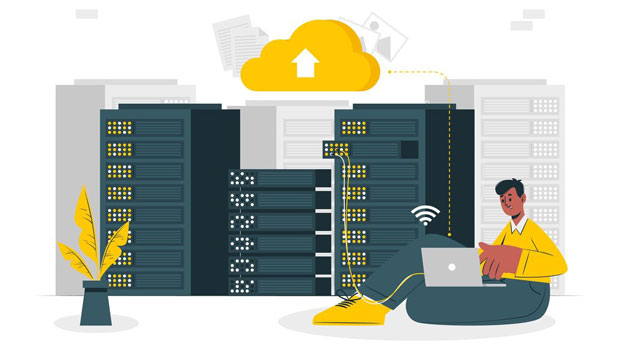When considering proxies in the realm of web scraping or network requests, there are two major categories to look into: static proxies and dynamic proxies. The performance of different proxies like PYPROXY and Curl Proxy can vary significantly depending on whether they are used in a static or dynamic proxy environment. Static proxies are typically predefined and do not change during a session, making them reliable but potentially vulnerable to detection or blocking over time. On the other hand, dynamic proxies rotate frequently, providing better anonymity and reducing the risk of detection. This article delves deeper into how PyProxy and Curl Proxy perform in both static and dynamic proxy environments, providing valuable insights for those considering which proxy to use based on their needs. Understanding Static Proxy and Dynamic ProxyBefore analyzing the specific differences between PyProxy and Curl Proxy, it is important to understand the distinction between static and dynamic proxies.A static proxy, as the name suggests, is fixed for a long duration. Once a static IP address is assigned, it remains the same throughout the session, or even for longer periods. Static proxies are often favored for tasks requiring long, uninterrupted sessions like logging into accounts, performing consistent scraping tasks, or automating workflows.In contrast, dynamic proxies are more flexible. They use rotating IPs, changing the IP address for every request or session. This method makes it more challenging for websites or services to track and block requests based on IP. Dynamic proxies are ideal for high-frequency web scraping, where bypassing detection mechanisms like CAPTCHA or IP bans is crucial.Performance of PyProxy in Static Proxy EnvironmentPyProxy, a Python-based proxy tool, works well in both static and dynamic proxy environments, but its behavior in a static proxy setting requires specific attention. When using static proxies with PyProxy, users can expect stability in their requests. Since the IP address does not change, PyProxy can easily maintain sessions and perform tasks that need long durations of connection, such as automated form submissions or API interactions. However, the downside is that static proxies are prone to getting blocked if the same IP address is used for extended periods. Some websites, especially those with strict anti-bot policies, might flag a static IP address and deny access after detecting repeated requests from the same source.In addition, if there are multiple users sharing the same static IP pool, there is a chance that the IP could become blacklisted, affecting performance. Therefore, while PyProxy offers reliability in static proxy environments, it might not be the best choice for tasks requiring high anonymity or a vast number of requests.Performance of Curl Proxy in Static Proxy EnvironmentCurl Proxy, a widely used tool for making HTTP requests, behaves similarly when used in a static proxy setting. As with PyProxy, using static proxies with Curl allows for stable and consistent connections. Curl’s performance is often favored for simple use cases, such as sending basic GET or POST requests to retrieve data from web servers.However, like PyProxy, Curl Proxy faces limitations in this environment. Static proxies can be detected through traffic analysis over time, leading to throttling or banning of the IP. When Curl Proxy is used with static proxies, the main challenge lies in handling rate limits and IP blocks. Web servers with strict bot protection mechanisms often track the IP addresses making requests and block those that show abnormal behavior, such as high request frequency or scraping patterns. This makes static proxies less effective for tasks that require evading anti-bot measures.Performance of PyProxy in Dynamic Proxy EnvironmentWhen it comes to dynamic proxies, PyProxy shines due to its flexibility and IP rotation capabilities. In a dynamic proxy environment, PyProxy can handle IP rotation seamlessly, changing the IP address after every request or periodically throughout the session. This makes it much more difficult for websites to detect and block PyProxy’s requests since the IP address is constantly changing.The performance of PyProxy in a dynamic proxy environment is superior to that of static proxies in many cases. Since the risk of IP blocking is minimized, PyProxy can handle tasks that involve frequent requests, such as large-scale web scraping or automated data extraction, without facing the same detection challenges encountered with static proxies.One key advantage of PyProxy in dynamic environments is its ability to balance anonymity with speed. With rotating IPs, websites are less likely to impose rate limits or blocks, allowing users to maintain high request volumes. Additionally, dynamic proxies are more effective in circumventing CAPTCHAs and other verification methods used by websites to deter bots.Performance of Curl Proxy in Dynamic Proxy EnvironmentCurl Proxy also performs well in dynamic proxy settings. The ability to rotate IP addresses automatically allows users to bypass IP-based blocking mechanisms, making Curl a reliable option for high-frequency requests. In scenarios where data scraping or automated browsing is required, using dynamic proxies with Curl helps maintain a high success rate without being flagged.However, Curl Proxy does have certain limitations when it comes to handling dynamic proxies. While it can manage IP rotations, users must configure Curl to handle session management and IP switching effectively. Otherwise, there is a risk of request failures or inconsistent connections. The real advantage of Curl in dynamic proxy environments is its compatibility with various proxy services and ease of integration into larger scraping systems.Key Differences Between PyProxy and Curl Proxy in Static and Dynamic Proxy EnvironmentsThere are several key differences between PyProxy and Curl Proxy, especially when considering static versus dynamic proxy environments.1. Ease of Use: PyProxy is often considered more user-friendly, particularly in Python-based projects. It provides built-in functionality for rotating proxies, making it easier for users to integrate dynamic proxy capabilities. Curl, on the other hand, requires more manual configuration, especially when handling rotating IPs or session management.2. Customization and Flexibility: PyProxy offers a higher level of customization, allowing users to fine-tune proxy behaviors, especially in dynamic environments. Curl Proxy, while highly versatile, requires more effort to implement such advanced features like IP rotation or error handling.3. Performance and Stability: In static proxy environments, both tools perform similarly, with a stable connection and predictable behavior. However, PyProxy excels in dynamic proxy environments, offering better scalability and anonymity due to its built-in proxy rotation features. Curl Proxy may require additional configuration and fine-tuning to achieve the same level of performance in dynamic setups.4. Anonymity and Security: Dynamic proxies generally offer better security and anonymity, and both PyProxy and Curl Proxy are more effective in this setup. However, PyProxy's automatic rotation of proxies gives it a slight edge in maintaining anonymity over time, especially for large-scale data collection.In conclusion, both PyProxy and Curl Proxy are powerful tools for utilizing proxies in web scraping and automation tasks. However, their performance can vary significantly depending on whether they are used in a static or dynamic proxy environment. While static proxies offer stability, they come with the risk of detection and blocking, particularly in tasks requiring large-scale data collection. Dynamic proxies, on the other hand, provide enhanced security and anonymity, allowing both PyProxy and Curl Proxy to perform better in high-frequency or high-volume use cases.Ultimately, the choice between PyProxy and Curl Proxy will depend on the specific needs of the user. For projects that require ease of use and automatic proxy rotation, PyProxy is a strong contender. For more technical users who need flexibility and can handle manual configuration, Curl Proxy can also serve as an excellent option. Understanding the differences in performance between static and dynamic proxies can help users select the most appropriate tool for their use case.
Sep 08, 2025


































































